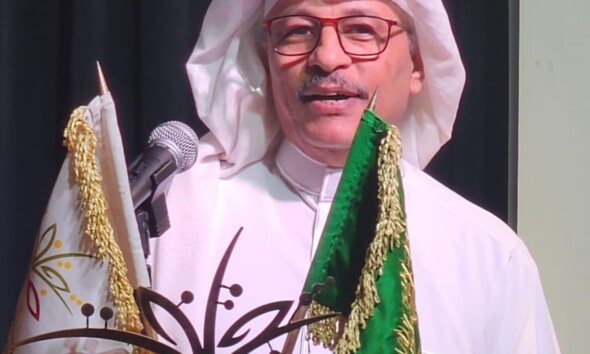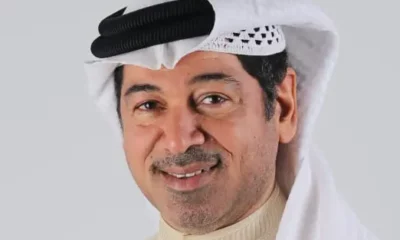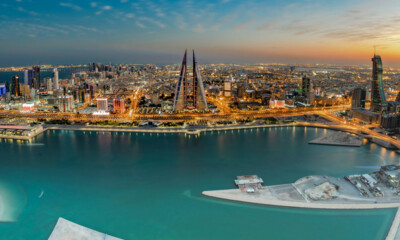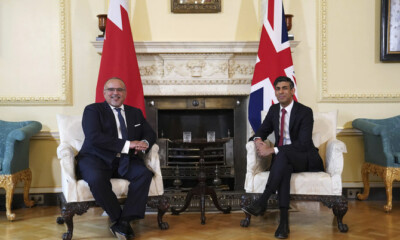Home » Interviews » Mahmoud Al-Baklava, An Artist and Researcher, Shares the Mysteries of Plastic art and Dilmun Civilizations in an Exclusive Interview with Arabisk London
Interviews
Mahmoud Al-Baklava, An Artist and Researcher, Shares the Mysteries of Plastic art and Dilmun Civilizations in an Exclusive Interview with Arabisk London
Published
11 months agoon
By
Huda
Our discussion with Mahmoud Al-Baklava in this exclusive interview with Arabisk London delves deeply into his interests, which range from visual arts to ancient antiquities, and how these trajectories converge to create a cultural legacy that inspires generations.
In a world where cultures constantly merge and change, people develop personalities that reflect their deep cultural identity and rich historical background.
Mahmoud Al-Baklava is one of these figures; he is an artist and researcher who has created paintings depicting the tales of the ancient Dilmun culture by weaving together historical threads.
Interviewed by: Baidaa Qatlish
Who is Mahmoud Baklava to those who do not know you?
Mahmoud Abdel-Saheb Ahmed Hassan Al-Baklawa was born in Manama, Bahrain, in 1966. My hometown of Manama, the capital, and the other part of the village of Bilad Al-Qadeem were both metropolitan environments for me.
That promising village, which I thought was a utopia due to the beauty of my recollections there.
I grew up drawing on these sources of high culture in the capital city of Manama, where there is openness and a large, conscious society characterised by coexistence among its various sects and an abundance of councils, clubs, places of worship, markets, libraries, and schools. I also gained quick experiences that helped my ambitions to emerge and grow.
My interest in hobbies changed till I realised I had a unique perspective on antiquities. Particularly the legacy of Dilmun, Bahrain’s ancient culture and civilization.
The fact that Dilmun seals and Sumerian cuneiform writings preserve the history and culture of the ancient Dilmun, Bahrain, piqued my curiosity.
Then, using plastic art, I was able to communicate to the receiver some of the secret facets of Dilmun culture and ideas. I painted these scenes. In addition to the Dilmun seals’ visual characteristics, there are references to Sumerian cuneiform writings and inscriptions.
These memberships complement my membership in the “Bahrain Philatelic Society,” the “GCC History and Antiquities Society,” and the “Bahrain History and Antiquities Society.”
I had also belonged to associations that focused on equestrian activities in the past.
Tell us about your experiences as a researcher and artist, and how these identities directed your work.
My area of expertise was modern history, and I also enjoyed archaeology, antiques, photography, stamp collecting, drawing, travel and tourism, horses and equestrianism, writing, and reading.
At the time, I was attempting to balance these interests with my work as an administrative secretary for the equestrian fields, and there was not enough time for me to produce rich artistic work.
I felt compelled to use the practical expertise I gained from wading through the ebb and flow of this immense sea to help raise awareness in society.
I so developed my interest in fine art through reading, researching, talking to artists constructively, taking fine art-focused courses and seminars, and conducting in-depth research. My journey in this sector was the “Abstract School,” where I specialised in “Dilmunism” and developed an appreciation for typographic art.
Scientific and academic research in the fields of archaeology and history necessitates original and approved scientific sources and references, as well as effort and patience in the study and research of material on a historical scientific basis.
Examining historical monuments and archaeological sites is another aspect of my archaeology speciality. This calls for travel to those locations as well as attendance.
Which piece of art did Mahmoud Al-Baklava finish first? What interests did this work correspond with at the time?
My approach to presenting archaeological data is to emphasise the synthetic data that closely resembles the archaeological data (because using the information model aids in the recipient’s comprehension and deeper understanding of the data).
My most significant artistic endeavour in the subject of archaeology is trying to discover the origins of the ‘harp’, a musical instrument.
The Dilmun Stringed Harp originated and was produced in Bahrain during the Dilmun culture era. Based on this research, I conducted an academic study using archaeological foundations, which verified that the entire musical instrument—including the head of the sacred bull that comes before the lyre’s protrusion and its gold-covered parts—was manufactured at that time.
Next, I printed “The Dilmun Stringed Harp” book following authorization from Bahrain’s Ministry of Information.
Although this book did not satisfy me, I nonetheless created a model of the Dilmun harp based on the patterns and sketches of the numerous Dilmun seals that have been found in Bahrain and on the island of Failaka in the State of Kuwait.
Thus, the first thing that I considered a major accomplishment was this pair—the book and the model of the artificial harp—along with the lectures and writing about it.
Read more about Naseer Shamma to Arabisk London: Oriental music, Like “Hijaz” and “Bayat,” Maqams Give Youngsters a Sense of Security and Attractiveness!
In your opinion, what is the connection between art and history? What can art reimagine or reflect? Can Mahmoud Al-Baklava conduct historical research using his artwork?
The foundation of history and art is the antiquities. Both the visual artist and the historian benefit from these tangible archaeological discoveries and legacies in writing about their respective fields of materialism and textual vision.
With this in mind, efforts occur to conserve archaeological sites through artefact manufacturing and restoration. So, although art mimics these elements by applying the artist’s creativity and understanding to aspire to the manner of life, food, and attire of humans thousands of years ago, archaeological and historical scientific research has its roots in original scientific foundations.
To emphasise this historical and archaeological component of my thesis, I made some models of the archaeological artefacts for study and research, which I then displayed in the lectures I gave on Dilmun’s ancient culture and civilization.
I created creative paintings on linen fabric, employed the manual printing process, and generated certain tangible objects fashioned following the original archaeological artefacts’ shapes.
Which subjects are you most interested in studying in your historical research? Why does it pique your interest? What have been your most significant contributions to historical research?
I have a good number of unprinted historical and archaeological research works in addition to a few printed ones. Because history is a broad field that requires specialisation, I enjoyed focusing on the history of the ancient civilizations in the Gulf, the Kingdom of Saudi Arabia, Mesopotamia, and Egypt’s Nile Valley.
I am motivated by my fascination with archaeological sites, particularly the rock art in AlUla, the Kingdom of Saudi Arabia. I contribute to the fields of history and archaeology through electronic blogs and the Gulf Cooperation Council Countries Society for the History and Antiquities.
One of the most crucial instruments of this scientific inquiry is the search for sources and historical references because historical research is a difficult and labour-intensive topic that demands patience, tenacity, and effort.
What inspired Mahmoud Al-Baklava to create books about the Dilmun civilization? What aspect of this society most impresses you?
The dearth of Arabic references and materials discussing this subject is what inspired me to contribute to the writing of several volumes. The vast majority of research and books about the Dilmun culture and civilization exist in foreign languages (English, French, and Danish), as are the works of those in charge of foreign excavation missions.
As such, my meagre contribution was insignificant to the vast number of foreign studies and research that has been officially registered at reputable international universities.
Even though Bahrain has very little archaeological material, this is nonetheless a commendable attempt. The civilizations of the Indus Valley, Persia, and the territories of Mesopotamia shared a tiny area of land at that time, but they were distinct and powerful due to their unique identities. The Dilmun seals and the numerous temples and towns that gave rise to the moniker “Kingdom of Cities” were among its notable products.
Additionally, the official indication points to a total of 85 thousand various graves constructed for two millennia as the tumuli and royal cemeteries!
As I look at this magnificence, I can’t help but be fascinated by every archaeological site, wondering how these prehistoric people managed to construct it given the limited resources and skills they had.
Not only did they have to contend with extreme heat, drought, and lack of precipitation, but they also demonstrated remarkable skills in civil engineering, agriculture, and animal husbandry.
How does your knowledge of cuneiform and Dilmun epigraphy inform your artistic expression?
Theoretically, I see my initial encounter with cuneiform texts as another significant turning point in my creative journey. This occurred when I went to the British Museum in London in the summer of August 2014 and stood in front of the Sumerian cuneiform writings that had been created at that time, feeling and touching their details. It felt to me that I was standing in front of a world’s wonder.
There are cuneiform inscriptions engraved on statues, walls, clay figurines, and ceramics. Among the most significant inventions human-made in antiquity is the revolution. After that date, I have become more interested in this topic both academically and as a speciality.
I recently had the opportunity to meet the world’s foremost cuneiform scholar, Professor Iring Finkel, a linguist who is currently kept in the British Museum in London; additionally, my research on the Dilmun string harp impressed Professor Richard Dombel, a musical archaeologist.
Conversely, I concentrated my research on the Dilmun culture’s internal written communication. It is present in the Dilmun seals as Dilmun inscriptions, which are significant symbolic communication inscriptions but did not develop into a written system.
I attempt to create work that is worthy of these earlier civilizations and cultures that have contributed to the wealth and growth of humanity, between the Dilmun inscription and the cuneiform alphabet.
How does Mahmoud Al-Baklava perceive the function of art in raising awareness of history and heritage? Do you believe that art may help to promote intercultural tolerance and understanding?
Since art is a collection of early engravings and paintings that depict human history, it existed before civilization and religious beliefs. Art had a significant impact on human history stations, message delivery, and anthropological advancement.
Grades in artistic content correspond to locations, regions, and periods since the artist has a message and an objective and helps to expose the aspects of societies and diverse cultures.
To emphasise the dynamic characteristics of society, the artist places his brush next to the owners of pens, writing instruments, and producing machines. Through artistic collaboration and meetings, these human aspects come to light, enhanced by communication and leading to new understandings, all without reference to politics or ideologies, giving colour and the brush the upper hand.
What are the biggest obstacles Mahmoud Al-Baklava has encountered in his career as a visual artist and historical researcher? How did you get through it?
The researcher and artist may encounter hurtful remarks and mocking glances at any time and place, but confidence in God and then in oneself is frequently an increase that inspires one to go on.
Some long-time experts in these fields view their specialisation as a barrier, and they employ demeaning criticism as a tool to undermine and delay the work of others.
Very few seem to have great, powerful spirits who are giving of their experiences, good words, and wise counsel. These people should inspire awe in us, society, and the generations that have graduated from them. We should also treat them with the respect and consideration they so richly deserve.
For historical scientific inquiry and the beautiful arts, there are no boundaries or shores. What matters is that an individual’s level and confidence grow via consistent work and output.
The real world is an unending tumultuous sea from which one can never truly draw. The keys to overcoming these challenges are knowledge, investigation, study, and consultation with experts. Lastly, the requirement for creative and literary output that showcases a person’s personality and concludes their body of work.
What guidance would Mahmoud Al-Baklava provide young individuals wishing to follow a career path in visual art or historical study similar to your own? Which abilities are necessary for success in these fields?
Thanks to digitalization, our world is now rich with information and easy to access. Social media groups, production, inspection, and investigation, among other things, make it easier to obtain knowledge in any speciality or subject. We would not have had easy access to these instructional resources in the past.
With the advent of electronic books that are simple to download from specialised websites, students now have easier access to professional content on the subjects of archaeology and history. Remote learning and communication are also possible, and there is easy access to worldwide fine art expertise thanks to the availability of reliable online retailers for all supplies needed for creating art, including paints and brushes.
The information is readily available in this digital age, but attaining the goal still requires determination, ambition crystallisation, and confirmation of presence in practical fields and electronic communication. It also requires making the most of time and opportunity to produce necessary materials, and most importantly, honing the skills that these academies require to produce material and practical work.
Which historical researchers or visual artists have influenced your work? What impact has their work had on your method of inquiry and ingenuity?
Salvador Dali, a surrealist, influenced me during my adolescent years. I transitioned to the abstract school and adhered to the Dilmunian abstract painting school over the years and phases.
My late history professor at Saint Joseph University in Beirut, Professor Father Louis Bouzier, was a neutral, scientific, and motivating academic who advocated for analysing information from its sources and going over all the sources and references linked to a specific piece of information. For these reasons, I profoundly benefited from him.
Which of your creative projects are the most significant to date? What historical and creative interests do these pieces represent? Which message does Mahmoud Al-Baklava hope these pieces will express?
I consider the pieces I have finished to be those whose subjects are Dilmun’s culture and civilization, particularly the ones that some influential people who are passionate about art have purchased. This is something I hold in the highest regard. I also gave many of them to active people.
I want the world to hear the voice of the Dilmun culture, which is ages ago. The Dilmun painters who left their mark on these seals with abstract motifs are the cornerstone of Bahrain’s ancient abstract school, and it is from them that we have received our love and inclination for the continuance of creation.
Which exhibitions are the most significant in which Mahmoud Al-Baklava has taken part? What fresh experiences and skill-building opportunities did these participations provide you?
Aside from holding a few private shows, I annually take part in all of the Bahrain Contemporary Art Society’s events. Also, I have participated in and continue to do so in group art shows.
The “Ziusudra” exhibition at the Bahrain Contemporary Art Society Gallery, which features a sizable number of paintings in a range of techniques, is my most significant private exhibition.
How does Mahmoud Al-Baklava intend to proceed? Which concepts would you like to investigate further in your studies and artwork? Can you tell us more about any artistic or research projects you are working on right now?
I have a lot of ideas, but each one requires funding in addition to the labour-intensive work required to carry it out. Currently, I’m working on a project where I’m going to create art for collaborative exhibitions. I still have this preoccupation with coming up with ideas and creating an identity for my art.
In addition, I intend to soon bring two initiatives to fruition: the first is organising the “Hajar” art exhibition, and the second is writing and publishing the “Dilmun Inscriptions” book.
What do you think Bahrain’s cultural future holds? How may history and the arts contribute to its enrichment?
God willing, I see a bright future for it. In the wake of the coronavirus pandemic, the literary and artistic communities have stepped up to make up for the lost years. As a result, comprehensive cultural activity (music, literature, and art) is at its height right now, which doubles our hope for the future and inspires us to pursue greater creativity and success.
We remember that the cultural, artistic, musical, historical, and archaeological elements have positive effects on the individual as well as Bahraini tourism, particularly when their spread receives support from the organisation of international artistic symposiums as well as group and solo exhibitions.

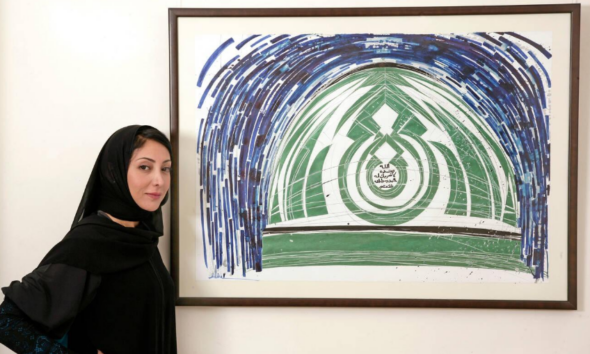
Lina Gazzaz: A Saudi Artist Who Painted History in Modern Colours!
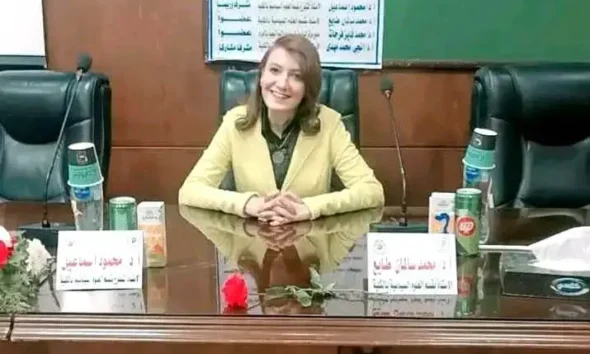
Terrorism Specialist Dr. Shimaa Samir: Multipolarity is Undermining Nuclear Deterrence, and it is Possible to Tame Extremist Ideology!
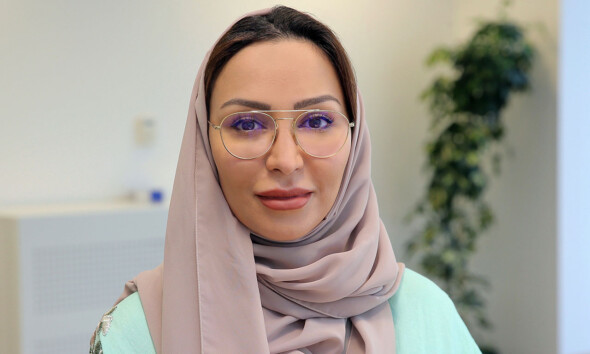
Daniah Orkoubi: A Saudi Entrepreneur and Technological Pioneer
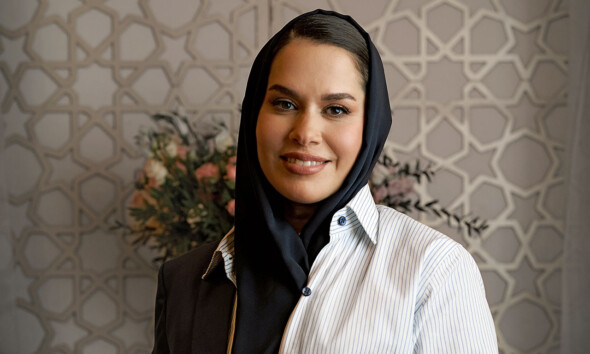
Saria Abdeen and Samt: Pioneering Saudi Efforts to Global Recognition
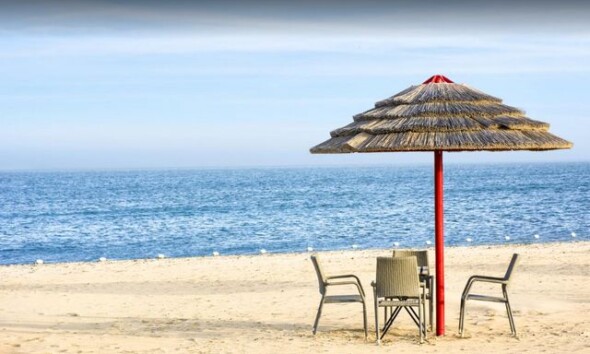
Jeddah’s Top Beaches for Women in 2025
